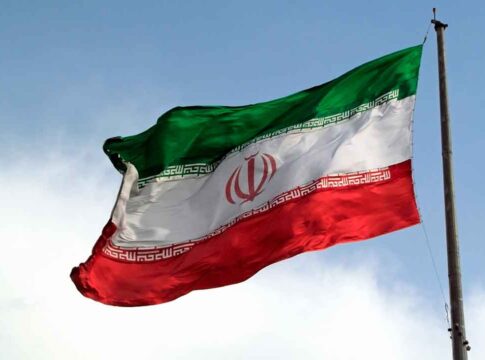A favorite characteristic of inspiration has always been the singing and chanting of someone’s death. Erin Burnett, a CNN anchor, has come under fire for her portrayal of “friendly” Iranians chanting “Death to America,” underscoring the nuanced controversy surrounding how the media portrays global attitudes toward the US. Iranian rhetoric has consistently used the phrase “Death to America” since the Revolution of the 1970s. The anti-American slogan has been repeatedly endorsed by Iranian Supreme Leader Khamenei.
Media Representation of “Death to America” Chants
During a recent segment on CNN’s “Inside Politics,” anchor Erin Burnett recounted her experience reporting from Tehran while surrounded by “Death to America” chants. Burnett told host Dana Bash that despite the hostile rhetoric, Iranians were willing to speak with her after learning she was an American journalist. “So those two sort of jarring realities of the chant and yet, the friendliness, have existed together,” Burnett stated during the broadcast, attempting to provide context for the complex relationship between Iranian citizens and America.
The segment came amid discussions about the sustainability of a Trump-brokered ceasefire between Iran and Israel, with Bash questioning whether peace could last “when the regime that is still there, who wants ‘Death to America,’ ‘Death to Israel,’ stays in place.” This exchange has drawn scrutiny from conservative outlets like The Western Journal, which criticized CNN’s framing of anti-American rhetoric.
Trying to find common ground with #FakeNews @CNN’s @ErinBurnett at the #ICE protests in LA. We should at least be able to agree that “Death To America” is not ok, right?
… guess what her response was! #TrumpIsYourPresident 😉@RealAmVoice #NotFakeNews pic.twitter.com/oTjEMgmmMD
— Ben Bergquam – Real America’s Voice (RAV-TV) News (@BenBergquam) June 11, 2025
Historical Context of Iranian Anti-American Rhetoric
The “Death to America” slogan has deep roots in Iranian political culture, dating back to the Iranian Revolution of the 1970s. Far from being merely symbolic, the chant represents official Iranian policy positions that have persisted through decades of diplomatic tensions. Iranian leadership has consistently employed this rhetoric during international negotiations, including during discussions surrounding the 2015 Joint Comprehensive Plan of Action (JCPOA), which limited Iran’s nuclear program until the United States withdrew in 2018 under President Trump.
Supreme Leader Ali Khamenei has occasionally attempted to qualify the slogan, claiming in 2019 that “‘Death to America’ means death to Trump and John Bolton and Pompeo,” rather than American citizens. However, this distinction has done little to ease diplomatic tensions between the two nations, particularly as Iran continued to develop its nuclear capabilities despite international pressure.
Erin Burnett claims there’s a “friendliness” to Iranians who chant “death to America” because they were willing to speak with her as a CNN reporter 🤡pic.twitter.com/XhRIMZcOLd
— Julia 🇺🇸 (@Jules31415) June 25, 2025
Recent Military Actions and Media Coverage
President Trump recently ordered precision strikes on three Iranian nuclear facilities, claiming success in crippling Iran’s nuclear program. The military action was followed by what Trump called the “12 Day War” between Iran and Israel, which ultimately ended in a ceasefire. Trump has repeatedly cited Iran’s historical hostility toward the United States as justification for these strikes, pointing to decades of antagonistic rhetoric from Iranian leadership.
Trump has been vocal in his criticism of media coverage of the Iran situation, particularly targeting CNN and MSNBC. In recent statements, he accused these networks of undermining American military efforts through their reporting. This criticism aligns with longstanding conservative concerns about potential media bias in coverage of international affairs, particularly regarding adversarial nations like Iran.
Media Trust and Public Perception
The debate over CNN’s framing of “Death to America” chants highlights broader concerns about media representation and public trust. Critics suggest that downplaying the significance of anti-American rhetoric may contribute to misunderstandings about genuine hostility toward the United States. While acknowledging that such sentiments aren’t representative of all Iranians, conservative commentators argue that major media outlets sometimes minimize the significance of official Iranian positions.
As tensions between Iran and the United States continue to evolve, the way media outlets portray these relationships remains consequential. The Iranian regime’s consistent use of anti-American rhetoric stands in contrast to individual interactions between citizens, creating a complex picture that requires careful and thorough reporting. For American audiences trying to understand international relations, these nuances matter significantly when forming opinions about foreign policy decisions.


